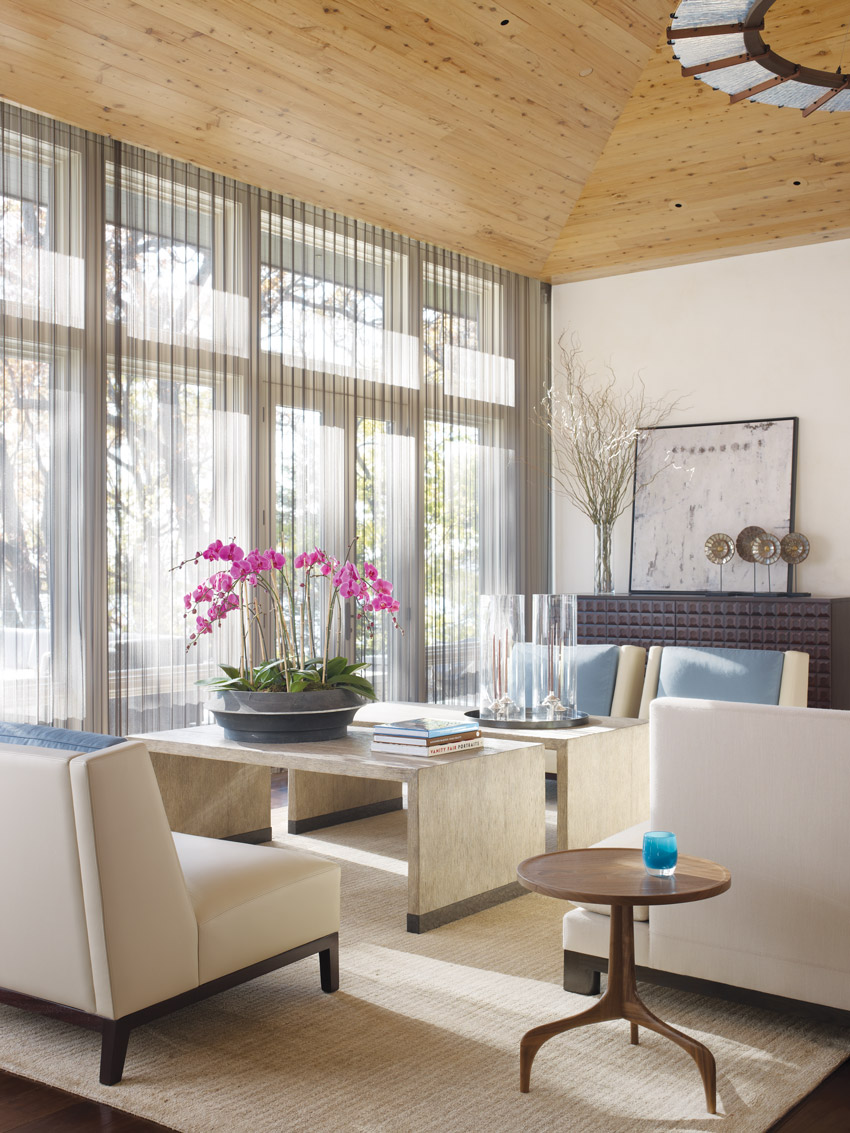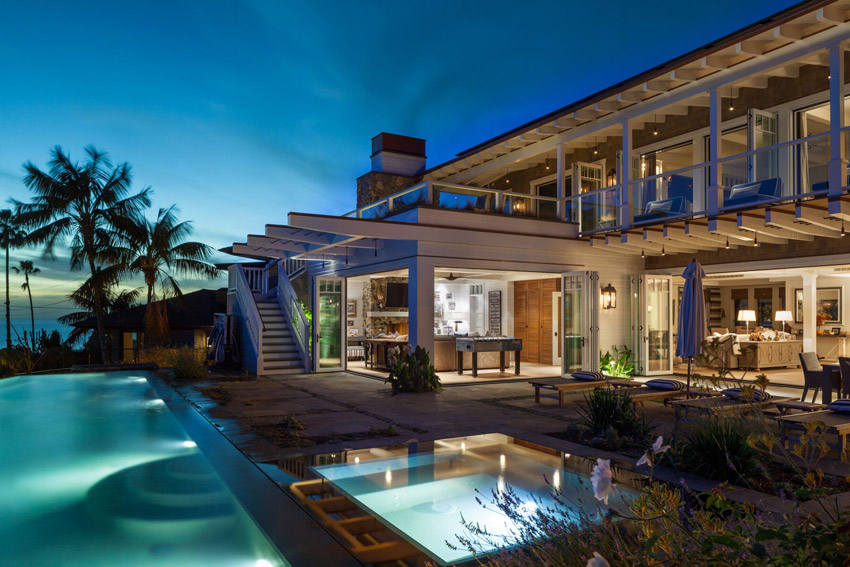Incorporating the Latest Trends in Residential Design
Wood Core, Aluminum Cladding Frame
The most energy-efficient framing system for a large door opening combines a solid wood core with an extruded aluminum cladding. While the aluminum cladding offers the weather resistance and low maintenance that the basic aluminum frames provided, the solid wood core creates a natural thermal barrier that effectively protects the interior from extreme temperature drops or unwanted heat transfer. This solution can satisfy the more progressive energy codes, in the most extreme climates, with a standard glass option in the panel.
Glass Panels
Glass can be specified in a range of single, double, or triple glazing options. Most applications use double-pane insulating glass units with low-e coatings and inert gas fill for energy efficiency. Specialty glazing may also be available that could feature privacy or obscured glass, acoustic control, impact resistance, or art glass.
Design Tips: Match Panel Material with Project Climate
Regardless of whether the project is located in a coastal town, a cold and mountainous area, or a hot and dry region, there is a large opening door system that can create that outdoor-indoor space clients want while delivering the thermal performance they need. Here are few items to consider when matching the panel materials with the climatic conditions of a project.
Cold, Mountainous Region
The extreme temperatures found in this region require large opening door systems that can withstand large temperature drops and offer the highest degree of thermal performance. Frames constructed from solid wood core and outfitted with the extruded aluminum cladding create the most energy-efficient solution for these outdoor-indoor spaces.
Coastal Region
Projects in coastal areas that experience temperate weather or a more tropical environment, where heat and cold transfer is not a concern, can use aluminum-framed large opening door systems to create their indoor/outdoor areas. If the coastal conditions are more extreme, a less-conductive framing material should be selected. While wood is a good natural insulator, its organic nature can be problematic in coastal environments. Look at thermally controlled aluminum frames to deliver the necessary thermal performance and withstand the environment without extra maintenance.
Hot Region
Projects located in places with elevated heat or humidity will benefit from using aluminum frames that contain thermal control elements. Thermally controlled aluminum framing will prevent the excessive heat from traveling into the interior and limit condensation from forming on the surface, even in humid climates. Regions that experience a range of temperatures (high peaks, low drops) will benefit from the combination panels that pair aluminum cladding with a solid wood core. These frames create the most energy-efficient large opening door system.
TREND: MAXIMIZE DAYLIGHT, MANAGE GLARE AND SOLAR HEAT GAIN
Bringing daylight into the interior has many desirable benefits—so many, in fact, that for years designers have been tasked with increasing the amount of daylight that trespasses inside. More windows and larger windows have been added to the structure. Skylights and glass doors and moveable glass walls are all being used to bring the warmth and ever-changing light of the sun into the living space. All of this daylight inclusion has also caused another trend in residential design: the need to manage the glare and solar heat gain that can be caused when uncontrolled daylight is invited inside a house.
Solar radiation is a complex energy containing elements of both light and heat. The portion of the sun’s energy spectrum that people see as light—the visible spectrum—is very dynamic. The amount of light energy that reaches a window changes throughout the day based on the time of year, time of day, and daily weather. At its most intense, direct sunlight can reach an intensity of up to 10,000 foot-candles (fc). On an overcast day, the intensity of daylight can be as low as 100 fc. A larger portion of solar radiation is not visible light but rather infrared radiation. This radiation can be problematic in a house because when it is absorbed by an object, it transforms into radiant heat. Infrared radiation will pass through the glazing, into the interior, be absorbed by the carpet or the furnishings, and heat it up. This requires more HVAC energy to keep the interior cool.
Wherever a designer places glazing, he/she must consider how to manage the incredible light and heat energy that will be present at the pane. There are a number of shading devices that have been developed over the years to obstruct the passage of direct sunlight and solar radiation into a house; solar shades, blinds, and venetian blinds are some of the most common. Now a new type of fabric has been developed to provide an aesthetic alternative to designers looking to manage glare and solar heat gain.

Photo: Werner Straube Photography
Coiled wire fabric panels can be applied as an interior drapery or an exterior scrim to manage glare and solar heat gain at the opening.
Notice

www.cascade-architectural.com

www.lacantinadoors.com

www.rockymountainhardware.com










